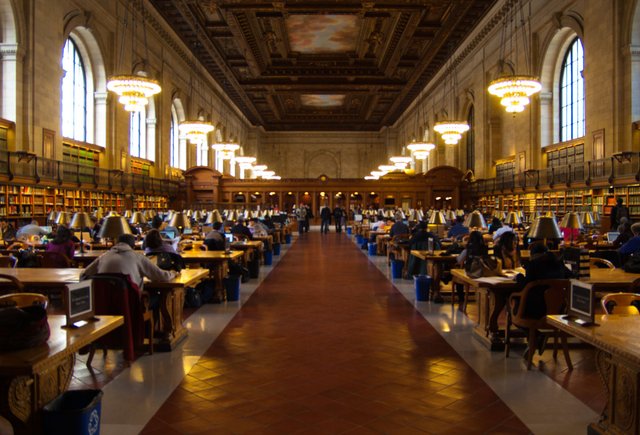Digital libraries for your digital resources needs

Photo Credit: Hall, M. (2011). Retrieved from https://flic.kr/p/9pcAok
If you are lucky enough to avail an education, you have likely attended a brick and mortar educational institution. This educational institution likely has a brick and mortar library. This library likely employs the Dewey Decimal Classification System that requires sorting through the card catalog to find the precise location of printed materials. Brick and mortar libraries remain as bedrocks of communities worldwide and are needed now more than ever in the age of post-truths and alternative facts. However, the advent of information and communication technology has also paved the way for an equally amazing counterpart: digital libraries.
According to the Association of Research Libraries, digital libraries are not single entities. These are composed of electronic collections from a handful of sources. In order for these collections to be linked, digital libraries (and its end-users) must have the necessary technology and must be transparent to its end-users. Universal accessibility should also be granted. More importantly, digital libraries are not just document surrogates. Depending on its mandate, digital libraries may embark on various initiatives.
To fully appreciate what we’ve been talking about here, check out these digital libraries:
- Project Gutenberg (http://www.gutenberg.org/)
You can never go wrong with a digital library that’s named after the inventor of the first printing press. Project Gutenberg houses more than 56,000 free e-books in five different languages: English, French, German, Italian, and Portuguese. (Note: While the materials are free, one must also check the copyright of some materials if accessed outside of the United States.)
- World Digital Library (https://www.wdl.org/en/)
As an initiative of the Library of Congress along with the United Nations Educational, Scientific and Cultural Organization or UNESCO, the World Digital Library (WDL) is one of the most comprehensive, free for all digital libraries. The WDL has 19,147 items from 193 countries since 800 BCE. It also embodies the characteristic of non-singularity as it shows collections contributed by the brick and mortar libraries around the world such as the United Nations Office at Geneva Library, The National Library of South Africa, and The National Library of Russia among others.
- Bartleby (https://www.bartleby.com/)
Originally created at Columbia University, Bartleby is an academic’s dream digital library. Its collection includes important disciplinal references such as Gray’s Anatomy of the Human Body and Strunk and White’s The Element of Style. It also boasts an incredible collection of fiction, non-fiction, verses, and essays. All you have to do is sign up!
- Open Library (https://openlibrary.org/)
True to its name, the Open Library invites the public to co-create knowledge with its lofty goal to have “a web page for every book ever published.” The software, data, and documentation are all open to the public. The Open Library also has over 3,000,000 free e-books, over 1,000,000 print-disabled modern works, and over 200,000 e-books available for borrowing. Like Bartleby, every learner interested must also sign up.
- Universal Digital Library (http://www.ulib.org/)
The Universal Digital Library (UDL) is an initiative led by the Carnegie Mellon University and in partnership with universities, libraries, and ministries of education in China, India, and Egypt. UDL focuses on literary, artistic, and scientific materials. It has available collections from Agriculture to Zoology in at least 21 languages.
Hope that these digital libraries aid you in your lifelong learning!